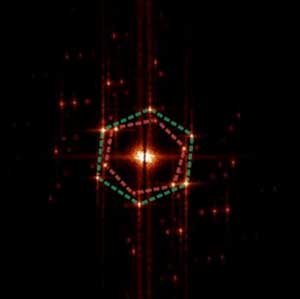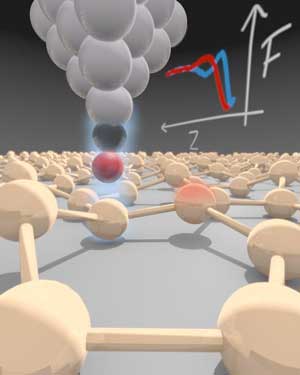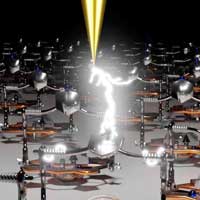 Large volume expansion during charging, the obstacle to using Si anodes in conventional liquid electrolytes, helps a Si anode composed of nanoparticles in solid electrolytes has high-rate discharge capability approaching those of Si films.
Large volume expansion during charging, the obstacle to using Si anodes in conventional liquid electrolytes, helps a Si anode composed of nanoparticles in solid electrolytes has high-rate discharge capability approaching those of Si films.
Monday, December 23, 2019
High-performance anode for all-solid-state Li batteries is made of Si nanoparticles
 Large volume expansion during charging, the obstacle to using Si anodes in conventional liquid electrolytes, helps a Si anode composed of nanoparticles in solid electrolytes has high-rate discharge capability approaching those of Si films.
Large volume expansion during charging, the obstacle to using Si anodes in conventional liquid electrolytes, helps a Si anode composed of nanoparticles in solid electrolytes has high-rate discharge capability approaching those of Si films.
Microsensor implants for 24/7 health monitoring
 Researchers have developed a new wireless reader that is so sensitive to minute changes in a sensor's readings that it enables the creation of sub-millimetre microsensors, tiny enough to be injected under the skin.
Researchers have developed a new wireless reader that is so sensitive to minute changes in a sensor's readings that it enables the creation of sub-millimetre microsensors, tiny enough to be injected under the skin.
Researchers break the geometric limitations of moire pattern in graphene heterostructures
 Researchers have uncovered interesting phenomena when multiple two-dimensional materials are combined into van der Waals heterostructures (layered ?sandwiches? of different materials).
Researchers have uncovered interesting phenomena when multiple two-dimensional materials are combined into van der Waals heterostructures (layered ?sandwiches? of different materials).
Researchers to develop a theory of transients in graphene
 The research considers behavior of graphene in the moment of its transition from the state of thermal equilibrium and the process of returning to this state.
The research considers behavior of graphene in the moment of its transition from the state of thermal equilibrium and the process of returning to this state.
Scientists develop gentle, microscopic hands to study tiny, soft materials
 Handling very soft, delicate items without damaging them is hard enough with human hands, let alone doing it at the microscopic scale with laboratory instruments. Three new studies show how scientists have honed a technique for handling tiny, soft particles using precisely controlled fluid flows that act as gentle microscopic hands. The technique allows researchers to test the physical limits of these soft particles and the things made from them -- ranging from biological tissues to fabric softeners.
Handling very soft, delicate items without damaging them is hard enough with human hands, let alone doing it at the microscopic scale with laboratory instruments. Three new studies show how scientists have honed a technique for handling tiny, soft particles using precisely controlled fluid flows that act as gentle microscopic hands. The technique allows researchers to test the physical limits of these soft particles and the things made from them -- ranging from biological tissues to fabric softeners.
New rules illuminate how objects absorb and emit light
 Researchers have uncovered new rules governing how objects absorb and emit light, fine-tuning scientists' control over light and boosting research into next-generation solar and optical devices.
Researchers have uncovered new rules governing how objects absorb and emit light, fine-tuning scientists' control over light and boosting research into next-generation solar and optical devices.
Scientists create thin-films with tantalizing electronic properties
 As predicted by theorists, experiments show that barium zirconium sulfide thin films hold great promise for solar cells, LEDs.
As predicted by theorists, experiments show that barium zirconium sulfide thin films hold great promise for solar cells, LEDs.
From 3-D to 2-D and back: reversible conversion of lipid spheres into ultra-thin sheets
 Scientists have developed a technique for the reversible conversion of 3D lipid vesicles into 2D ultra-thin nanosheets. Both the stable nanosheets and the reversible 2D?3D conversion process can find various applications in the pharmaceutical, bioengineering, food, and cosmetic sciences.
Scientists have developed a technique for the reversible conversion of 3D lipid vesicles into 2D ultra-thin nanosheets. Both the stable nanosheets and the reversible 2D?3D conversion process can find various applications in the pharmaceutical, bioengineering, food, and cosmetic sciences.
Electronics at the speed of light
 A team of researchers has found a way of transporting electrons at times below the femtosecond range by manipulating them with light. This could have major implications for the future of data processing and computing.
A team of researchers has found a way of transporting electrons at times below the femtosecond range by manipulating them with light. This could have major implications for the future of data processing and computing.
Arrangement of atoms measured in silicene
 In contrast to the ultra-flat material graphene, which is made of carbon, silicene shows surface irregularities that influence its electronic properties. Now, physicists have been able to precisely determine this corrugated structure.
In contrast to the ultra-flat material graphene, which is made of carbon, silicene shows surface irregularities that influence its electronic properties. Now, physicists have been able to precisely determine this corrugated structure.
New nano-barrier for composites could strengthen spacecraft payloads
 Researchers have developed a robust multi-layed nano-barrier for ultra-lightweight and stable carbon fibre reinforced polymers that could be used to build high precision instrument structures for future space missions.
Researchers have developed a robust multi-layed nano-barrier for ultra-lightweight and stable carbon fibre reinforced polymers that could be used to build high precision instrument structures for future space missions.
Computing with molecules: A big step in molecular spintronics
 Chemists and physicists joined forces to design, deposit and operate single molecular spin switches on surfaces. The newly developed molecules feature stable spin states and do not lose their functionality upon adsorption on surfaces.
Chemists and physicists joined forces to design, deposit and operate single molecular spin switches on surfaces. The newly developed molecules feature stable spin states and do not lose their functionality upon adsorption on surfaces.
Saving Moore's Law by 3D integration with 2D materials
 By selecting certain 2D materials and stacking them, according to the researchers, not only does the monolithic 3D conserve precious space on the chip, but also allows for configuration based on the combined electronic properties of the materials.
By selecting certain 2D materials and stacking them, according to the researchers, not only does the monolithic 3D conserve precious space on the chip, but also allows for configuration based on the combined electronic properties of the materials.
Subscribe to:
Posts (Atom)
